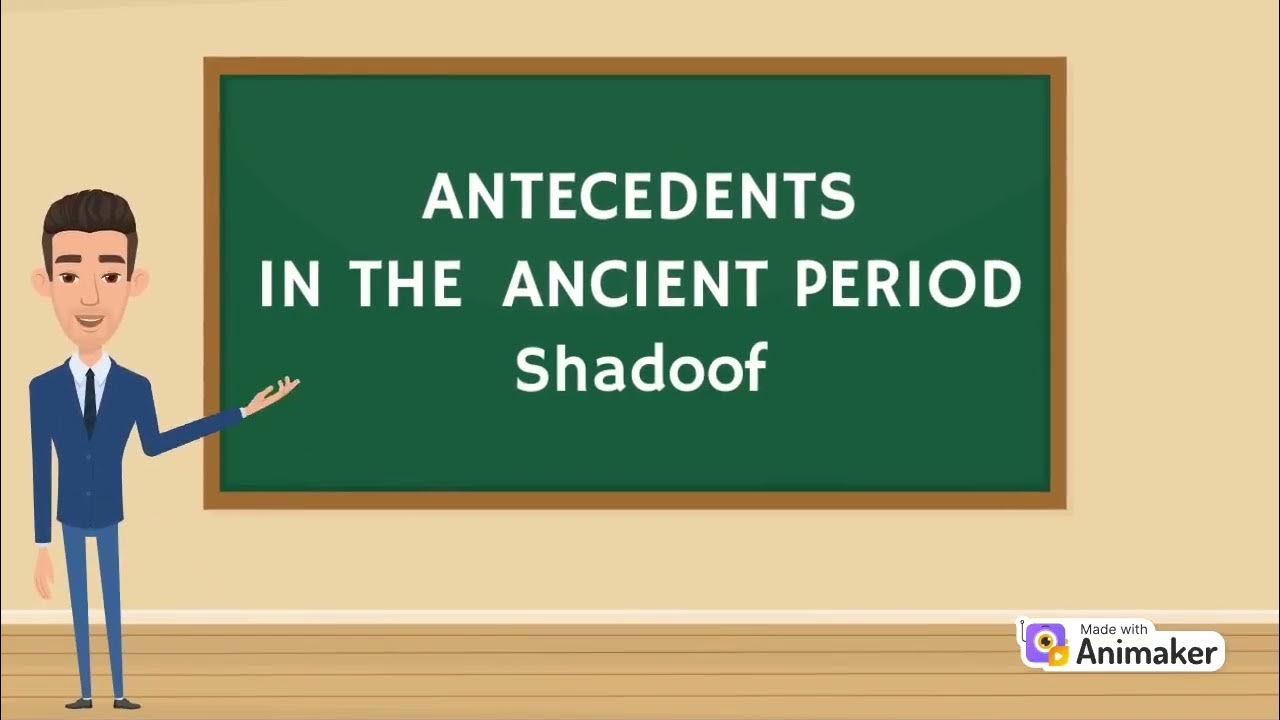Last Judgement of Hunefer, from his tomb
Summary
TLDRIn the British Museum, a guide explores an ancient Egyptian papyrus scroll from the Book of the Dead, detailing spells and prayers for the afterlife. The scroll, found in Hunefer's tomb, depicts his judgment by Anubis and the weighing of his heart against Ma'at's feather, symbolizing ethical living. If found virtuous, Hunefer would join the afterlife, avoiding Ammit, the devourer. The guide highlights the enduring Egyptian art style and the integration of hieroglyphs with visual arts, reflecting a culture focused on preservation and the afterlife.
Takeaways
- 📜 The script describes a visit to the British Museum in London, focusing on ancient Egyptian mummies and artifacts.
- 🌿 A papyrus scroll, made from the reed of the Nile Delta, was a significant writing surface up to the Medieval period.
- 📚 The scroll contains the 'Book of the Dead', which includes spells, prayers, and incantations for the afterlife.
- 🏺 The tradition of such texts dates back to the Old Kingdom and includes pyramid texts and coffin texts.
- 📜 The text on display was found in the tomb of Hunefer, a scribe of high status in Egyptian culture.
- 🧝 The scroll depicts Hunefer speaking to gods, signifying his good life and hope for an afterlife.
- ⚖️ A scene of judgment is described, where Hunefer's heart is weighed against the feather of Ma'at, goddess of divine order.
- 🐊 If Hunefer's heart is lighter than the feather, indicating a good life, he is allowed into the afterlife, avoiding Ammit, the devourer.
- 📝 Thoth, the ibis-headed god, records the proceedings, confirming Hunefer's passage to the afterlife.
- 🌟 Hunefer is introduced to Osiris, the supreme god of the afterlife, by Horus, symbolizing eternal life with an ankh.
- 👥 The art of ancient Egypt is characterized by a mixture of hieroglyphs and images, reflecting a culture of preservation and consistency.
Q & A
Where is the setting of the script?
-The setting is in the British Museum in London, specifically in a room filled with ancient Egyptian mummies.
What is the significance of papyrus in ancient Egyptian culture?
-Papyrus, made from a reed that grows in the Nile Delta, was the single most important surface for writing in ancient Egypt, used up until the Medieval period.
What is the Book of the Dead?
-The Book of the Dead is an ancient Egyptian text containing spells, prayers, and incantations that the dead were believed to need in the afterlife.
How does the tradition of the Book of the Dead relate to earlier Egyptian writings?
-The tradition of the Book of the Dead relates to earlier writings such as the pyramid texts from the Old Kingdom, which were instructions for the afterlife, and coffin texts, which were writings on coffins.
Who was Hunefer, and what is his significance in the script?
-Hunefer was a scribe of high rank in Egyptian culture, whose tomb contained the text being discussed. He is depicted in the scroll as having lived a good life and deserving entry into the afterlife.
What is the scene of judgment depicted in the scroll?
-The scene of judgment shows Hunefer's heart being weighed against the feather of Ma'at to determine if he has lived an ethical life and deserves to enter the afterlife.
What is the significance of the heart and feather in the scale?
-The heart and feather represent the weighing of the deceased's heart against the principle of Ma'at, or divine order and ethical living. If the heart is lighter than the feather, it signifies a life lived in accordance with Ma'at.
Who is Anubis in the context of the script?
-Anubis is a jackal-headed god associated with the dead, mummification, and cemeteries. In the script, he leads Hunefer into judgment and adjusts the scale to ensure a fair weighing of the heart.
What role does the deity Thoth play in the afterlife as described in the script?
-Thoth, depicted with the head of an ibis, is the god of writing and knowledge. He records the proceedings of the judgment and reports that Hunefer has succeeded in his trial, allowing him to move on to the afterlife.
What is the significance of the eye of Horus in the script?
-The eye of Horus, represented with talons instead of hands, carries an ostrich feather, symbolizing eternal life. It is associated with a myth involving Horus and Seth and represents protection and health.
How does the script illustrate the preservation aspect of Egyptian culture?
-The script highlights the importance of preservation in Egyptian culture through the use of natron for mummification and the enduring artistic and cultural forms that have remained consistent over thousands of years.
Outlines

Cette section est réservée aux utilisateurs payants. Améliorez votre compte pour accéder à cette section.
Améliorer maintenantMindmap

Cette section est réservée aux utilisateurs payants. Améliorez votre compte pour accéder à cette section.
Améliorer maintenantKeywords

Cette section est réservée aux utilisateurs payants. Améliorez votre compte pour accéder à cette section.
Améliorer maintenantHighlights

Cette section est réservée aux utilisateurs payants. Améliorez votre compte pour accéder à cette section.
Améliorer maintenantTranscripts

Cette section est réservée aux utilisateurs payants. Améliorez votre compte pour accéder à cette section.
Améliorer maintenantVoir Plus de Vidéos Connexes

The Book of the Dead May Not Be What You Think It Is

Mysteries of the Egyptian Book of the Dead | Secrets of Ancient Egypt

How Papyrus was Made | Ancient Egypt for Kids | Learning Made Fun

5000 YEAR OLD Book Found In Egypt Revealed A HORRIFYING Message About Humanity

History and Significance of Papyrus Paper

STS ANTECEDENTS IN THE ANCIENT PERIOD
5.0 / 5 (0 votes)
